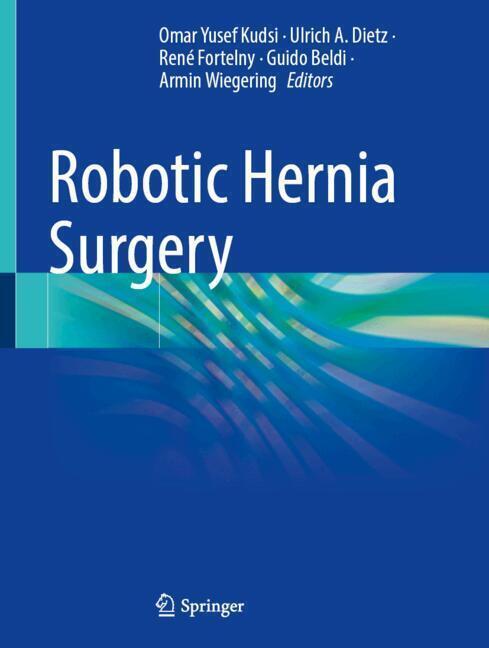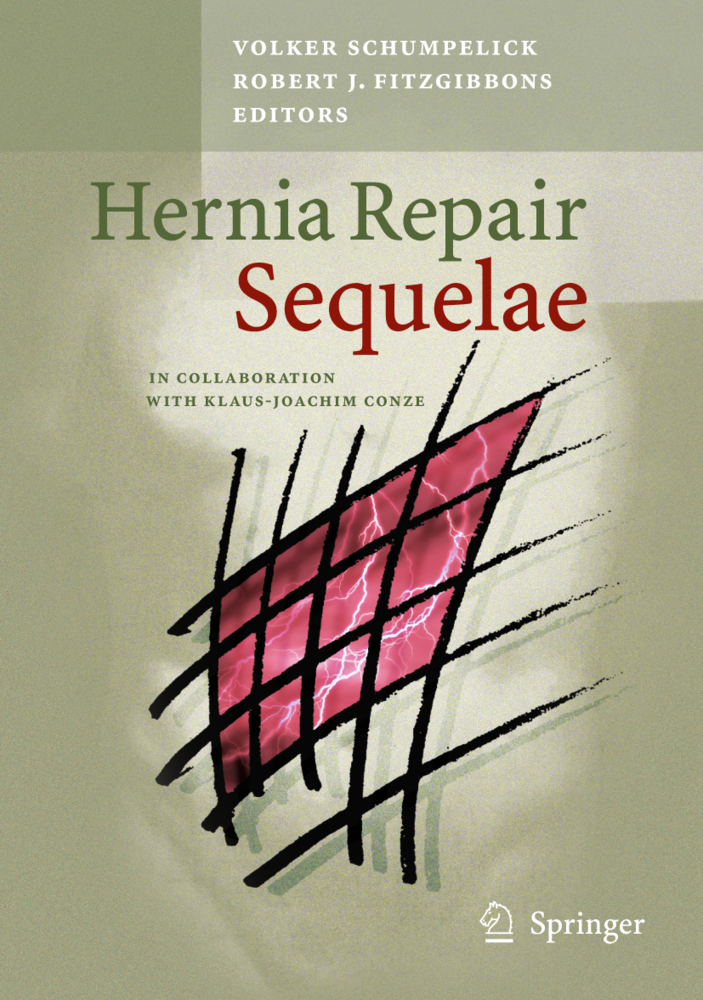Robotic Hernia Surgery
Robotic Hernia Surgery
The possibilities and limitations of robot-assisted hernia surgery are presented in this book by an international team of authors in all their facets. The focus is on step-by-step descriptions of individual procedures for different indications and the detailed description of the anatomical conditions as they appear to the surgeon during the robot-assisted approach. Numerous drawings and surgical photographs, specially created for the book, illustrate the presentation and are complemented by a total of 16 videos of the surgical procedures, which can be accessed from the book using the publisher's MoreMedia app. Additional chapters address patient-related and scientific foundations and consider the procedures in their social and economic context.
What is a hernia? Explaining hernia to the patient
The importance of comorbidities in the planning of hernia surgery
The patient with hernia and morbid obesity: When and what to operate on first?
When sarcopenia becomes a problem in hernia patients
Perioperative handling of oral anticoagulants
Hernias in women of childbearing age: special patient counseling
ACNES: A pain syndrome of the abdominal wall that simulates visceral pain
Chronic pain in hernia surgery: Preoperative risk assessment and recommendations
Tranversus abdominis plane block
Operation indication yes or no: watchful waiting in hernia patients
The patient with recurrent hernia
Botulinum toxin A for the prehabilitation of complex hernias
Knowing and fulfilling expectations - surgical information on hernia surgery
Biocompatibility and cellular mechanisms of mesh incorporation
What do fibroblasts think about synthetic meshes? A tissue engineering neofascia model
Adhesions, incorporation and material fatigue: findings from mesh explantations
Hernia meshes in the contaminated field
Does getting older mean getting a recurrence? Assessing aging correctly
Principles of mesh overlap and hernia gap closure
Mesh fixation
Planning of robotic hernia repair
Learning curves of robotics in hernia surgery
Abdominal Wall Surgery Education in Europe
EPAs: when can what be entrusted in continuing education?
Models for robotic hernia surgery
Introduction: Ventral hernias
Guidelines and classification: Ventral hernias
Anatomy of the navel
Anatomy of the linea alba
Robotic primary ventral hernia repair (r-vTAPP)
Robotic eTEP for umbilical and epigastric hernias
Robotic transabdominal retromuscular umbilical patchplasty (r-TARUP)
Robotic treatment of rectus diastasis
The Inan-inverting plication in rectus diastasis
Robotic-assisted repair of Spieghel hernias
Robotic-assisted repair of lumbar hernias
Introduction: Inguinal and femoral hernia
Guidelines and classification: Inguinal and femoral hernia
Endoscopic anatomy of the posterior groin
Robotic transabdominal inguinal and femoral hernia repair (r-TAPP 2.0)
Robotic total extraperitoneal inguinal and femoral hernia repair (r-TEP)
Robotic-assisted retroperitoneal triple neurectomy
Robotic-assisted mesh explantation from the groin
Guest commentary: The robotic TAPP from the perspective of the laparoscopist
Introduction: Incisional hernias
Guidelines and classification: Incisional hernias
Anatomy of the anterior abdominal wall
Anatomy of the anterior abdominal wall in MRI and CT imaging
Anatomy, embryology and pathophysiology of the peritoneum
Pathophysiology of the abdominal wall and its scars (alt_59_Petter-Puchner/Austria)
Solutions and hazards in the retrorectus space
Anatomy of the diaphragm and the subxiphoidal region
Robotic-assisted transversus abdominis release (r-TAR) of large midline incisional hernias
Robotic-assisted repair of combined median-paramedian incisional hernias with intraperitoneal mesh (r-IPeM)
C-section hernia
Internal hernias
Introduction: parastomal hernias
Guidelines and classification: parastomal hernias
Anatomy of the anterolateral abdominal wall with regard to stomas
Anatomy of intestinal and urological stomas
Robotic treatment of the parastomal hernia
Robotic implantation of prophylactic meshes for the creation of permanent stomas
Introduction: Hiatal hernias
Guidelines and classification: Hiatal hernias
Determination of esophageal motility prior to planned antireflux surgery
Robotic-assisted hiatal hernia repair
Meshes for the esophageal hiatus
C
Kudsi, Omar Yusef
Dietz, Ulrich A.
Fortelny, René
Beldi, Guido
Wiegering, Armin
| ISBN | 978-3-662-71629-8 |
|---|---|
| Artikelnummer | 9783662716298 |
| Medientyp | Buch |
| Copyrightjahr | 2025 |
| Verlag | Springer, Berlin |
| Umfang | XXIII, 642 Seiten |
| Abbildungen | XXIII, 642 p. 289 illus., 276 illus. in color. |
| Sprache | Englisch |











